Many fans of slow cooking like to try different ways of using their crockpot. First, they might experiment with soups and stews, and then later want to find out how to make baked goods such as bread, cakes, desserts, or even black garlic in there.
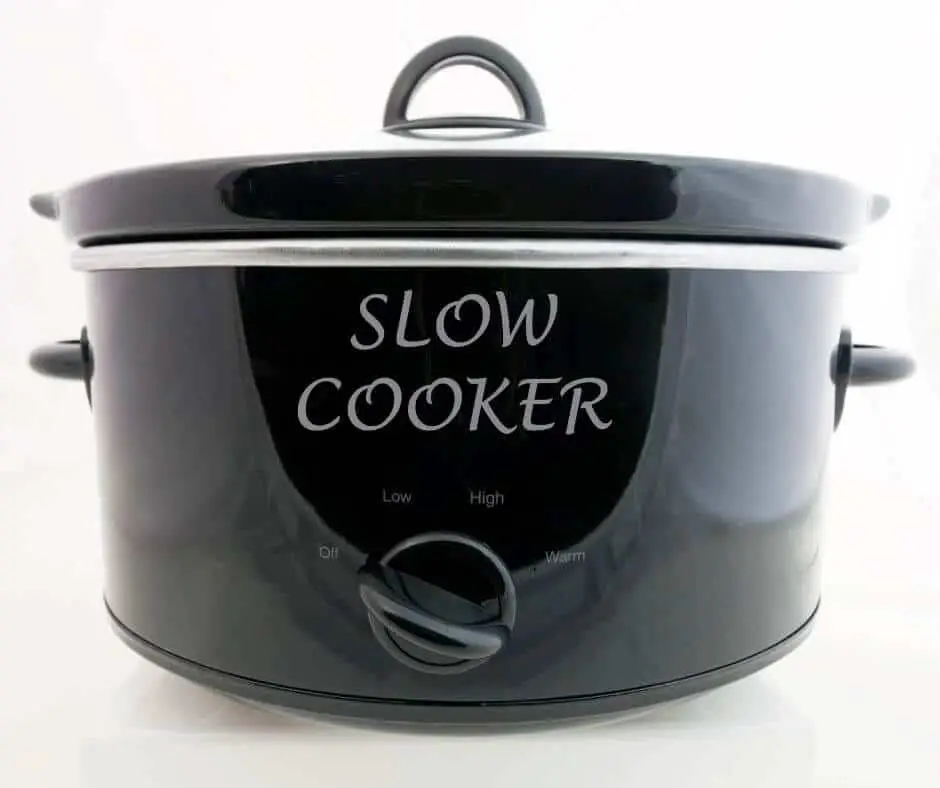
Yes, the surprising fact is that crockpots can really have many different uses. And once you have been using it for a while and experimented with different foods you might be wondering what you can use to line your crockpot to seal in all the flavors and make cleanup even easier.
Can you use Ziploc bags in the crockpot? Can you use baking paper or foil in there? Are there slow cooker liners I can buy?
Let’s take a look at some of these ideas, and discover what works and what to avoid.
Using Ziploc Bags In A Crockpot Is Not A Good Idea!
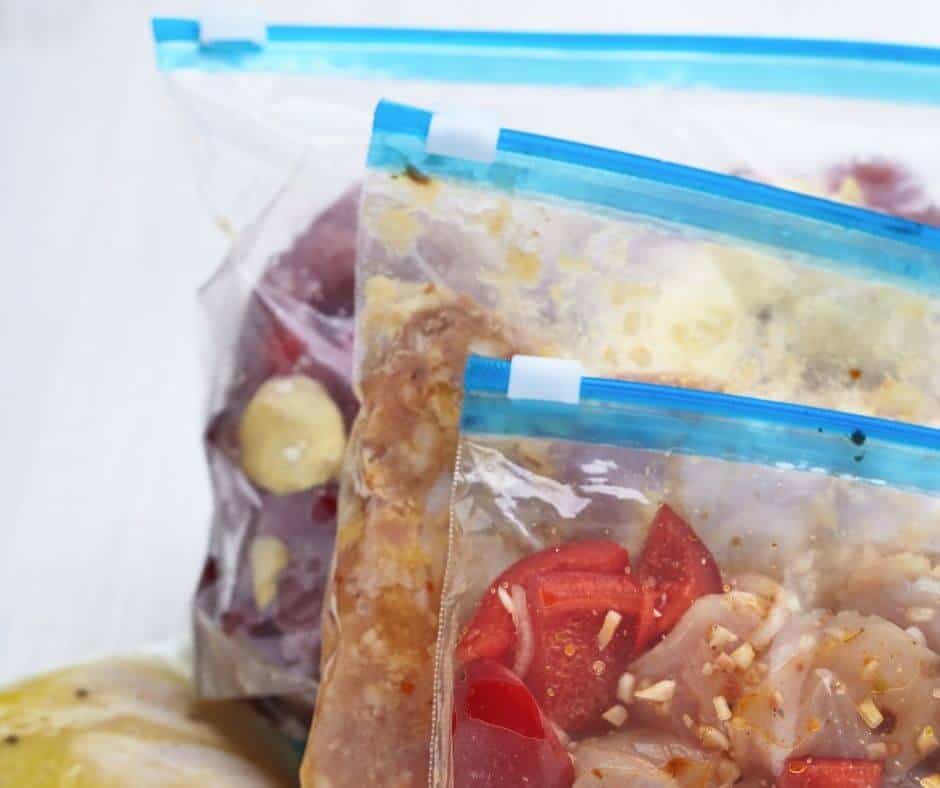
Ziploc bags have their uses. You can store leftover food, use them for freezing meals in portions or pack snacks in them for your kids to take to school. However, using them in a slow cooker is not a good idea.
Although Ziploc, Sous Vide, or Solimo food storage bags look strong and sturdy, putting something plastic in your crockpot and then turning on the heat is likely to result in a sticky mess and bits of plastic in your food, neither of which is appealing thought!
Even if the Ziploc bag doesn’t melt, it can still leach some unwanted chemicals into your food.
Even though some Ziploc bags can withstand temperatures up to 158°F (70°C) for a short period of time, the temperature in the slow cooker may vary from 190°F (88°C) on the Low setting to 300°F (149°C) on the High setting.
Save the Ziploc bags for the uses they were intended for, and find an alternative way to line your slow cooker.
Alternatives To Ziploc Bags To Line Your Slow Cooker
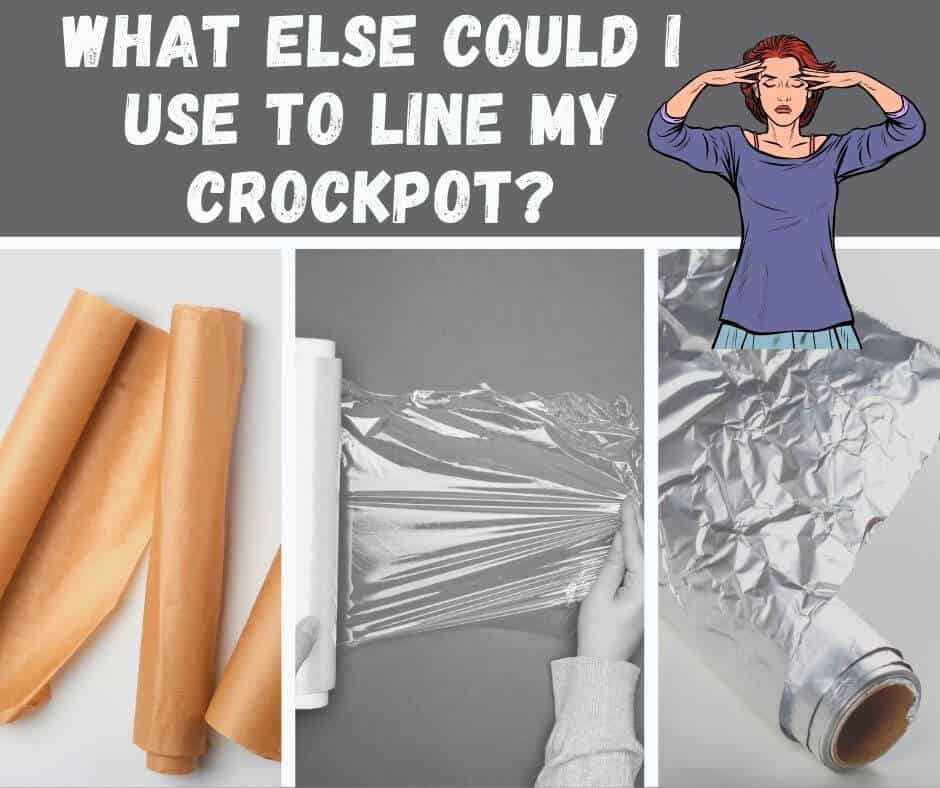
So, what else can you use to line your crockpot?
Well, there are all kinds of different materials you likely have lying around your kitchens, such as aluminum foil, waxed paper, or parchment paper.
These are not ideal either though. It is hard to get a good seal with either foil or some type of cooking paper. You would have to use several pieces and food is probably just going to run through the spaces between the sheets, so it would be pointless to use either. They are likely to break or tear too.
Even if you manage to use foil or baking paper sheets to cover the inside of your slow cooker, as soon as you start to serve the food, the juices will probably run between the sheets, and then you will have to clean the slow cooker, which defeats the whole purpose!
Don’t give up though, because there is one wonderful alternative to using Ziploc bags, foil, or baking paper, and that is… slow cooker liners!
What Are Slow Cooker Liners?
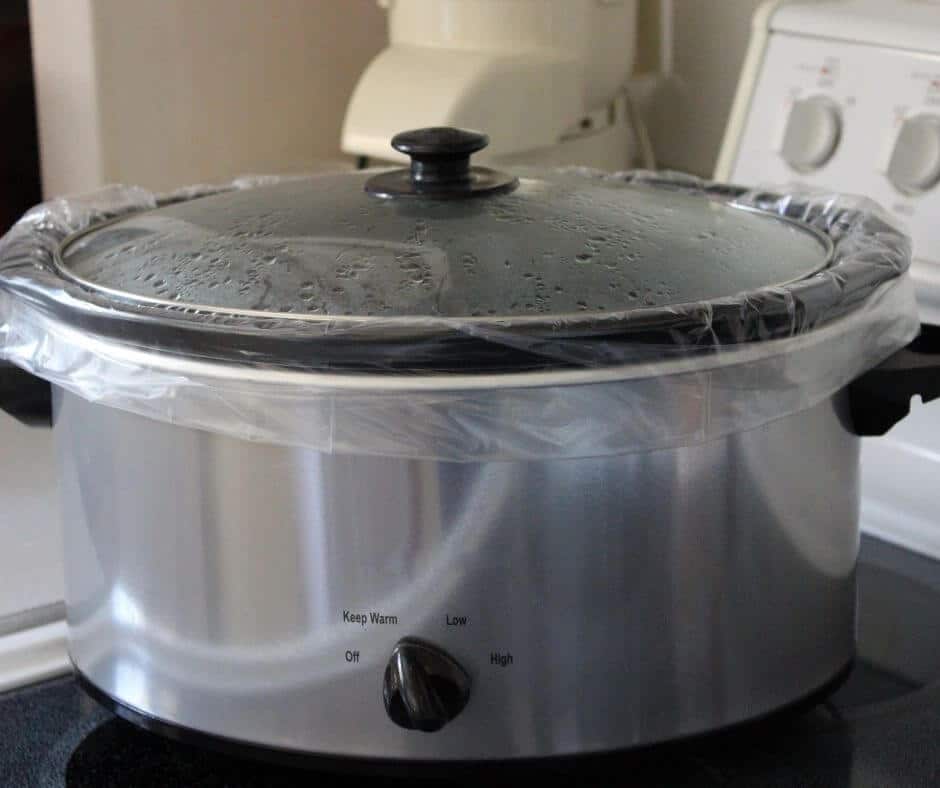
You might have spotted these in the grocery store and wondered what they are and how they work.
Slow cooker liners, which are sometimes called inserts or slow cooking bags, are purpose-made bags to line the inside of your crockpot. Slow cooker liners are made of special food-safe heavy-duty and heatproof Nylon resin or Mylar and will not affect the taste of food and cooking time.
These liners stop the food from touching the surface of the crockpot and they don’t melt or react in any way with the food.
They make cleanup a breeze as there won’t be any scrubbing or soaking needed. There might be a little moisture left in the pot after cooking but nothing you can’t simply wipe out with a sponge or paper towels.
Generally, you use 1 liner for each meal you cook, then throw it away afterward. Different brands have different prices, but the average works out about 50 cents per liner. You can get cheaper ones but they tend not to have such positive reviews!
Why Line Your Crockpot At All?
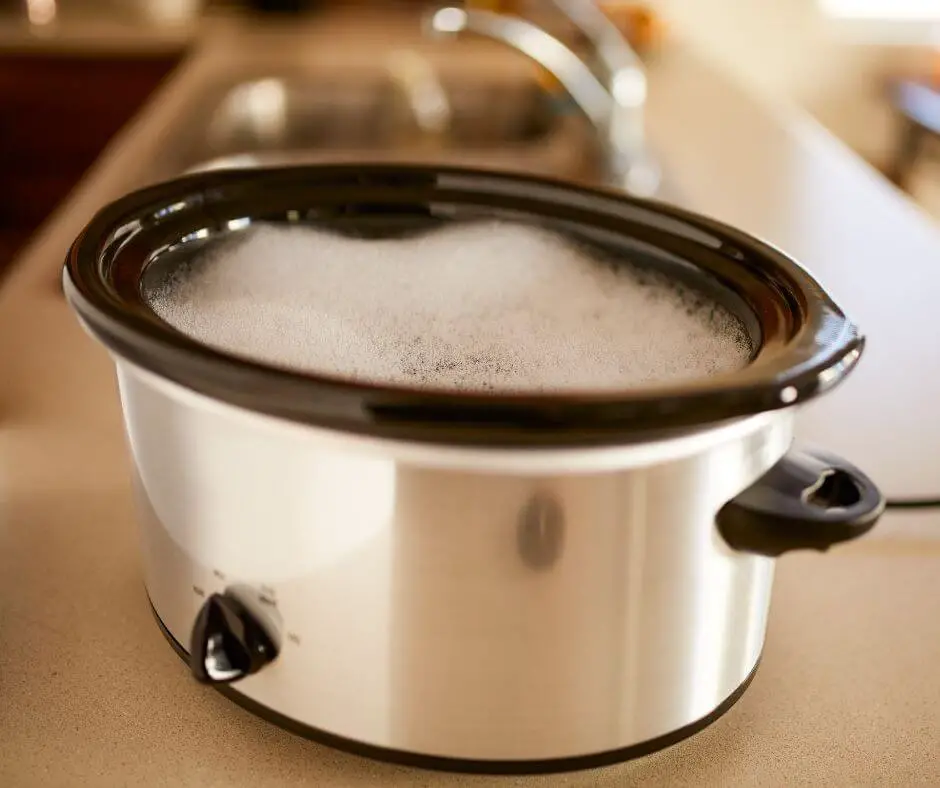
Not only do slow cooker liners make cleanup easy, but they are also great for people who have limited use of their hands. These liners will make soaking and scrubbing out your crockpot a thing of the past.
A well-used slow cooker pot that is made of glazed porcelain or ceramic eventually develops scratches and cracks and you might worry that this is going to leach chemicals or bacterial into your food, so using a crockpot liner will keep the food away from scratches or cracks. You can actually extend the life of your appliance by using the liners.
And last but not least, slow cooker liners are a great help if you want to cook different foods at the same time. Whether you’re cooking for just one or two or a large crowd you can use separate bags for each food item.
That will prevent different foods from mixing together and each bag can be removed at different times, like vegetables, meat, or rice, depending on the required cooking time for each food item.
Are Slow Cooker Liners Safe?

Slow cooker liners are designed to be used in a crockpot, so most of the better brands are completely BPA-free. They are food-safe and temperature-resistant whether you use them on high, low, or keep warm settings.
The recommended temperature range for most liners is -86°F to +375°F (-30°C to +190°C).BPA, or bisphenol A, is a chemical that can leach into food and negatively affect health. Even crockpot liners with BPA have such a tiny amount that whatever gets into your food is within acceptable limits.
However, if this is a deal-breaker, just make sure you specifically shop for a BPA-free brand, like Reynold’s and Kooc.
What Size Slow Cooker Do They Fit?
Most slow cooker liners will fit both round and oval pots from 3 to 8 quarts (2.8 – 7.5 liters) capacity, which is medium, large, and extra-large. Even if you have a smaller slow cooker, you can still use a liner. There will just be some extra overhanging the edges.
However, if you do have a really small one-person appliance then check out these Reynolds Kitchens Slow Cooker Liners below. These are the perfect fit for a small 1-3 quart crockpot.
Tips And Tricks For Using Slow Cooker Liners
- Inspect your pot before using a liner. An older crockpot might be prone to overheating in one particular area or it might have cracks. Such issues could affect how well a slow cooker liner is going to work.
- If you want to prepare a meal ahead, you can do this in the liner bag, then simply refrigerate it and carefully transfer it into the crockpot in the morning. This is handy if you know your morning will be busy with the school run, getting to work on time, and so on.
- Choose a good brand for the best result. Reynolds, PanSaver, and Kooc all offer high-quality slow cooker liners, which are strong and sturdy.
- Use two liners side by side in one crockpot to cook two different dishes simultaneously! If you want to cook the main dish and a side, or a meal and a dessert, or even two appetizers for a party, this is a great solution. If you’re using a large crockpot, you might even want to try making three at once!
- If you need to stir your meal during cooking, make sure you use a plastic or silicone spoon since sharp metal might snag on the liner and tear it.
- If you don’t eat all the food in one sitting, you can easily store the food in the liner bag until you want to warm it back up. Just twist and tie the top to seal, and refrigerate.
Can Slow Cooker Liners Be Used To Freeze Leftovers?

Although slow cooker liners are freezer-safe, you might not want to freeze food in them for long periods of time. The reason is that slow cooker liners may not provide an adequate barrier against moisture loss.
If you want to freeze the food, you can simply wrap a layer of aluminum foil around the bag or place the liners in plastic freezer bags to help prevent moisture loss. Or, you might just prefer to transfer it into freezer-safe plastic containers since this is just as easy.
Can You Use Slow Cooker Liners In The Oven, Microwave, Or Instant Pot?
These liners are foremost designed to be used in a slow cooker but most are multi-use and can also be used for standard roasting pans, casserole dishes, lasagna pan, and many other dishes you can use in your standard oven.
DO NOT use slow cooker liners in the microwave, or instant pot, and nor should you use them in a barbeque grill because they can melt, making your food inedible and your cooking surface or container sticky and messy.
Although some brands might even withstand temperatures of up to 400°F (204°C), others are not suitable for any heat above what a crockpot can produce, so it is not worth the risk of trying to use liners for other purposes.
So, always check the product labels and only use them for the purpose that is specified on the specific product label, like the PanSaver EZ Clean Multiuse Cooking Bags below.
Similarly, most roasting bags should not be used in a crockpot. Roasting bags are plastic liners used for roasting meat in the oven, but the difference in shape and size means they would be tricky to fit into a crockpot, despite usually being made of the same material.
Oven bags are open at one end rather than the top, and they are meant to be tied. Use roasting bags in the oven and slow cooker liners in the slow cooker for the best results.
Final Thoughts
Using slow cooker liners means sealing in flavor while cutting down drastically on cleanup time. Simply place a liner in your slow cooker, add your ingredients, and cook the meal as normal, stirring partway through with a non-metal spoon if needed.
Then just serve the food straight from the crockpot and simply toss the liner out once you’re done. That’s it! If you prefer to relax after dinner rather than scrub out your crockpot, slow cooker liners make life simpler.
Do not use Ziploc bags and get a genuine crockpot liner, they are well worth it for all crockpot aficionados and save time and effort when making delicious crockpot recipes!
Read Also: Different Types of Cookware Materials and The Pros and Cons




